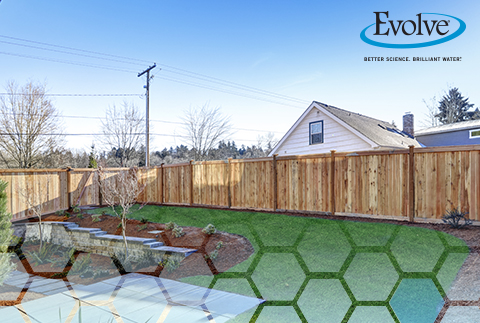A water softener is a relatively simple appliance, buts has its own set of factors as to where it should be installed. The unit needs to be on a flat, level surface, with easy accessibility to refill salt, and located near where your water enters your home. Ideally this would be in a heated basement, storage room, or garage.
But, for homes without basements, sometimes finding that ideal location for your water softener that meets the requirements isn’t quite possible. For those who live in warmer climates with limited space, one option is considering installing the softener outside the home. While this can open up more space in the home, there are strict requirements for outdoor installations.
The Temperature Factor
Water softeners are designed to operate between 35 and 100 degrees Fahrenheit, which immediately rules out Nebraska, Iowa, and the surrounding states. Our winter temperatures often fall far below 35 degrees.
The nature of the softener’s components are the reason for temperature requirements. A softener has two separate tanks; the “media tank” (the tall, thin tank that contains the resin media), and the “brine tank) (a shorter, wider tank that contains softener the salt). Typically with little insulation, these tanks are susceptible to damage from extreme temperatures – hot or cold.
For example, if the media tank freezes, the fiberglass exterior would crack, causing depressurization of the tank and leaks. Outside below freezing temperatures could lead to the distributor tube (the main transfer of water in the media tank during regeneration) to crack, allowing resin media to leave the tank and into your home’s plumbing, potentially leading to damage to your home’s appliances and fixtures.
The Outdoors Installation Checklist
If your water treatment professional at Futuramic’s has somehow determined that your home is acceptable for an outside installation, there are some important things that you also need to consider.
- Space – You will need a dedicated space outdoors for plumbing to run that is easily accessible and easy to maintain.
- Close to the Source – All water softeners need be located near the entry point of your home’s water supply. This is often close to the water meter if you are supplied with city water or near a pressure tank if your home gets water from a well.
- Electricity – Water softeners need a power source close to the unit to power the electronics on the valve that operates its regeneration cycles.
- Accessibility –The softener should be located somewhere that is easy and convenient to access because you will need to get to it to add salt.
- Drain – During the regeneration cycle, minerals that were capture are flushed from the tank and that water is safely flushed to a nearby drain.
- Shade from the Sun – Over time, direct sunlight can damage the water softener’s tank and cover that protects the valve’s electronics. Outdoor application means it may be recommended to install an outside structure to shield it from the UV rays.
The water treatment professional installers at Futuramic’s Clean Water Center have dealt with countless different ways to properly and safely set up and install water softeners, depending on the needs and wants of the homeowner. As mentioned before, outdoor installation in our climate is highly unlikely, but worth a conversation.
In areas that allow for outdoor installation, we may have tricks to reduce the amount of exposure to elements and regulating the temperature of the unit’s tanks. Our team has the expertise to assist you in the correct type of installation for your home, regardless of your space situation.


